1 ACP An Age Control Protocol For the Internet Tanya Shreedhar Sanjit K. Kaul and Roy D. Yates
2025-04-30
0
0
2.85MB
17 页
10玖币
侵权投诉
1
ACP+: An Age Control Protocol For the Internet
Tanya Shreedhar, Sanjit K. Kaul, and Roy D. Yates
Abstract—We present ACP+, an age control protocol, which is
a transport layer protocol that regulates the rate at which update
packets from a source are sent over the Internet to a monitor. The
source would like to keep the average age of sensed information
at the monitor to a minimum, given the network conditions.
Extensive experimentation helps us shed light on age control
over the current Internet and its implications for sources sending
updates over a shared wireless access to monitors in the cloud.
We also show that many congestion control algorithms proposed
over the years for the Transmission Control Protocol (TCP),
including hybrid approaches that achieve higher throughputs at
lower delays than traditional loss-based congestion control, are
unsuitable for age control.
Index Terms—Age control protocol, Age, Freshness, Internet
Protocols, Congestion Control, Internet of Things.
I. INTRODUCTION
The availability of inexpensive embedded devices with the
ability to sense and communicate has led to a proliferation of
real-time monitoring applications spanning domains such as
health care, smart homes, transportation and natural environ-
ment monitoring. IoT devices are deployed alongside users in
homes/offices/cities and connect to the Internet over wireless
last-mile access such as WiFi. Such devices repeatedly sense
various physical attributes of a region of interest, for example,
traffic flow at an intersection. This results in a device (the
source) generating a sequence of packets (updates) containing
measurements of the attributes. A more recently generated
update includes a more current measurement. These updates
are communicated over the network to a remote monitor in the
cloud, which processes them for analytics and/or to compute
any required actuation.
For monitoring applications, it is desirable that freshly
sensed information is available at monitors. At a monitor,
the freshness of an update is measured by its age, the time
elapsed since its generation at the source. When an application
delivers a stream of updates, it is desirable to minimize the
time-average age of sensed information at the monitor.
While one may achieve a low update packet delay by simply
choosing a low rate for the source to send updates, this may be
detrimental to freshness; a low update rate can lead to a large
age at the monitor simply because updates from the source are
infrequent. On the other hand, sending updates at a high rate
over the network can also be detrimental to freshness if each
received update has high age as a result of experiencing a large
network delay. In the absence of network mechanisms that
mitigate congestion, freshness at a monitor is optimized by the
source smartly choosing an update rate [1]–[5] appropriately
matched to the network.
Figure 1 depicts the typical behavior of the metrics of
delay and age as a function of throughput, which has been
observed for a wide variety of systems that are subject to
0.2 0.3 0.4 0.5 0.6 0.7 0.8 0.9
Throughput
2
4
6
8
Age
0
2
4
6
Delay
Figure 1: Interplay of the networking metrics of delay (solid
line), throughput (normalized by service rate) and age. Shown
for a M/M/1 queue [6] with service rate of 1. The age curve
was generated using the analysis for a M/M/1 queue in [1].
Under light and moderate loads, throughput (average network
utilization) increases linearly in the rate of updates. This leads
to an increase in the average packet delay. Large packet delays
coincide with large average age. Large age is also seen for
small throughputs (small rate of updates). At a low update rate,
the monitor receives updates infrequently, and this increases
the average age (staleness) of its most fresh update.
congestion effects [5]. Observe that there exists a sending rate
(and corresponding throughput) at which age is minimized.
More so than voice/video, monitoring applications are ex-
ceptionally loss resilient and they don’t benefit from the source
retransmitting lost updates. This is in contrast to applications
like that of file transfer that require reliable transport and high
throughputs but are delay tolerant. Such applications use a
variant of Transmission Control Protocol (TCP) for end-to-end
delivery of application packets. As we show in Section III and
later in Section XI, the congestion control algorithm of TCP,
which optimizes the use of the network pipe for throughput,
and TCP’s emphasis on guaranteed and ordered delivery is
detrimental to keeping age low. Unlike TCP, User Datagram
Protocol (UDP) ignores dropped packets and delivers packets
to applications as soon as they are received. While this makes
it desirable for age-sensitive applications; sending updates at
a fixed rate incognizant of the underlying network can be, in
fact, disastrous for age of the updates.
In this paper we detail the age control protocol ACP+,
which builds on an early version named ACP [7], [8] that was
the first proposal for a transport layer age control protocol.
ACP+ was first introduced in [9] together with the failings
of ACP in shared access settings and some initial insights
on the age control performance of TCP congestion control
algorithms. ACP+ would like to keep the average age of
sensed information at the monitor to a minimum. To achieve
the same, ACP+ adapts the rate of updates from a source,
in a network transparent manner, to perceived congestion
over the end-to-end path between the source and the monitor.
arXiv:2210.12539v1 [cs.NI] 22 Oct 2022
2
Consequently, like ACP, it also limits congestion that would
otherwise be introduced by sources sending to their monitors
at unnecessarily fast update rates.
Our contributions in this paper include the following.
(a) We investigate the impact of different TCP configurations,
such as congestion window and segment sizes, on the age
of updates at a monitor, and compare with UDP (User
Datagram Protocol).
(b) We detail how ACP+ interfaces with the TCP/IP network-
ing stack via UDP and with sources and monitors.
(c) We define the age control problem over the Internet and
intuit a good age control behavior using a mix of analysis
and simulations. This leads us to a detailed description of
the control algorithm of ACP+.
(d) We provide a detailed evaluation of ACP+ using a mix
of simulations (controlled, easier to introduce very high
contention, however, only a few hops) and real-world
experiments over the Internet (WiFi access with many
end-to-end paths sharing it, resulting in low to moderately
high contention, followed by many hops over the very fast
Internet backhaul).
(e) We shed light on age control over end-to-end paths in the
current Internet. We observe that the age optimizing rate
over an end-to-end path that has a source send updates
over a WiFi access followed by the Internet backhaul to a
monitor in the cloud is much smaller than the bottleneck
link rate of the path, which is the link rate of the WiFi
access. The age optimizing rate stays at about 0.5Mbps
for WiFi access rates of 6-24 Mbps and backhaul rates
as high as 200 Mbps. In fact, it is the age optimizing rate
over the path in the absence of a first WiFi hop. Turns out
that the intercontinental path, much faster than the WiFi
link, is in fact the constraining factor with respect to the
achievable age over the end-to-end path, likely because of
the other traffic flows that utilize the intercontinental path.
We also observe that at the age optimal rate, depending on
the network scenario, a source may send multiple updates
per round-trip-time (RTT) or may send an update over
many RTT. In general, the bottleneck link rate and the
baseline (updates sent in a stop-and-wait manner) RTT
may not shed light on the age optimal rate.
(f) We investigate age, throughput and delay trade-offs ob-
tained when using state-of-the-art TCP congestion control
algorithms to transport updates over the Internet. We
experiment with a mix of loss-based (Reno [10] and CU-
BIC [11]), delay-based (Vegas [12]) and hybrid congestion
control algorithms (YeAH [13] and BBR [14]) for different
settings of receiver buffer size. We conclude that TCP con-
gestion control algorithms are unsuitable for age control.
In fact, as contention on the access network increases, the
AoI performance of TCP degrades unacceptably.
The rest of the paper is organized as follows. In the next
section, we describe related works. In §III, we demonstrate
why the mechanisms of TCP are detrimental to minimizing
age. In §IV, we define the age control problem. In §V, we use
simple queueing models to intuit a good age control protocol
and discuss a few challenges. We detail the Age Control
Protocol, how it interfaces with a source and a monitor,
and the protocol’s timeline in §VI. §VII details the control
algorithm that is a part of ACP+. This is followed by real-
world evaluation over Intercontinental paths and a contended
WiFi access in §VIII. We discuss simulation setup and results
in §IX. We discuss the various congestion control schemes
used in the Internet in §X and ageing over the Internet using
these schemes in §XI. We conclude in §XII.
II. RELATED WORK
The queue theoretic analysis using AoI wherein the network
and the source(s) are assumed to be described by a service
distribution, distribution of arrivals of updates into the queue-
ing facility, any queue management like prioritization and
preemption is discussed in [1], [2], [4], [15]–[24]. These works
typically carry out analysis that results in the distributional
properties of age at the monitor or, more typically, the expected
value of the time-average age or the peak age. Such works can
help choose an appropriate arrival rate for the one or more
sources that are sending packets through the queueing system.
The choice of rate is one-shot and doesn’t adapt to current
network conditions.
There have also been substantial efforts to evaluate and op-
timize age for multiple sources sharing a communication link
[22], [23], [25]. In particular, near-optimal scheduling based on
the Whittle index has been explored in [26]. There are works
on scheduling updates to optimize the age at the monitor [27]–
[30]. Notable amongst these are the greedy policy, stationary
randomized policy, max-weight policy and Whittle’s index
policy which uses either the network channel conditions and/or
age of the information for making the scheduling decision.
Such works adapt to the network conditions and propose
an age-based scheduling policy which is usually one-shot
optimization policy.
There are works that design a sampling policy as a method
to reduce the AoI [31], [32]. One such approach is the zero-
wait policy that aims to achieve maximum throughput and
minimum delay but it fails to minimize the AoI especially
when the transmission times are heavy tail distributed [31],
[32]. The optimal sampling policy in such cases is a threshold
one, either deterministic or randomized. Sampling policies
for unreliable transmissions are considered in [33], [34].
However, more recently, [35] proposes an optimal sampling
strategy to optimize data freshness for unreliable transmissions
with random forward and backward channels. The proposed
policy is based on a randomized threshold strategy where the
source waits until the expected estimation error exceeds a
threshold before sending a new sample in case of successful
transmission. Otherwise, the source sends a new update im-
mediately without waiting. All these policies use optimization
theory or optimal stopping rules for minimizing age but only
in the context of a stop and wait protocol. Our work highlights
the need to model multi-hop settings, wherein multiple updates
could be queued at any time, to understand optimizing age over
modern wide-area IP networks.
While the early work [36] explored practical issues such
as contention window sizes, the subsequent AoI literature
3
0.1 0.3 0.5 0.7 0.9
Utilization
0
0.03
0.06
Age/ Delay (s)
Age UDP
Delay UDP
0.1 0.3 0.5 0.7 0.9
0
2
4
6
Age TCP
Delay TCP
Figure 2: Impact of 0.1packet error rate on age and packet
delay when using TCP and UDP.
has primarily been focused on analytically tractable simple
models. Moreover, a model for the system is typically assumed
to be known. Our objective has been to develop end-to-
end updating schemes that perform reasonably well without
assuming a particular network configuration or model. This
approach attempts to learn (and adapt to time variations in) the
condition of the network links from source to monitor. This is
similar in spirit to hybrid ARQ based updating schemes [37],
[38] that learn the wireless channel. Note that [37] uses
the reinforcement learning techniques in unknown network
environments. The chief difference is that hybrid ARQ occurs
on the short timescale of a single update delivery while ACP
learns what the network supports over many delivered updates.
Age in Systems. There is limited systems research on ageing
of information and its optimization in real-world networks [7]–
[9], [39]–[43]. A detailed analysis of all the age related
practice works on real networks can be found in [44]. In [39],
authors discuss the age of information (AoI) in real-networks
where a source is sending updates to a monitor over a selection
of access networks including WiFi, LTE, 2G/3G and Ethernet.
The key takeaway from that work is the need for an AoI
optimizer that can adapt to changing network topologies and
delays. Our previous work proposes the Age Control Protocol
(ACP) [7], [8], [40], which is a transport-layer solution that
works in an application-independent and network-transparent
manner. ACP attempts to minimize the age of information of a
source at a monitor connected via an end-to-end path over the
Internet. In [9], we propose a modification to ACP and also
compare it with other state-of-the-art TCP congestion control
algorithms used in the Internet. In [41], WiFresh, a MAC and
application-layer solution to ageing of updates over a wireless
network is proposed. While both [8] and [41] look at ageing
of updates on the Internet, they differ in their approach and
scope. ACP is a transport layer solution that works by adapting
the source generation rate without any specific knowledge
of the access network or any network hop to the monitor,
whereas, WiFresh is a scheduling solution designed for WiFi
networks. In [43], we study the coexistence of age-sensitive
ACP+ flows and throughput-hungry TCP flows sharing an
end-to-end Internet path over a WiFi access. We found that
ACP+ flows coexisting with TCP flows remain unaffected
when assigned a higher Differentiated Services Code Point
(DSCP) priority when all flows originate in the same device.
123456
Time (s)
0
0.4
0.8
Delay (s)
123456
0
1
2
3
Rx Data (KB)
Figure 3: A sample path of delays suffered by update packets
transmitted using TCP and the corresponding received bytes
by the monitor. The packet error rate was set to 0.1.
However, the gains from prioritization vanish when the flows
are instead sharing a contended wireless access.
In summary, unlike other works, ACP and ACP+ aim
to provide a practical age control algorithm that seeks to
minimize the average age in a multi-source and multi-hop
network where there is no prior information about the network
and no control on the other sources that have access to it.
III. AGE SENSITIVE UPDATE TRAFFIC OVER TCP
Before we delve into the problem of end-to-end age control,
we demonstrate why TCP as a choice of transport protocol
is unsuitable for age sensitive traffic. Specifically, we show
that the congestion control mechanism of TCP, together with
its goal of guaranteed and ordered delivery of packets, can
lead to high age at the monitor, particularly in comparison to
UDP. We demonstrate this effect for a wide range of network
utilization, and not just when the utilization is high.
We simulated a simple network consisting of a source that
sends measurement updates to a monitor via a single Internet
Protocol (IP) router. The source node has a bidirectional point-
to-point (P2P) link of rate 1Mbps to the router. A similar link
connects the router to the monitor. The source uses a TCP
client to connect to a TCP server at the monitor and sends its
update packets over the resulting TCP connection. We will also
compare the obtained age with when UDP is used instead. A
larger utilization of the 1Mbps links is achieved by the source
sending update packets at a faster rate.
Retransmissions and In-order Delivery: Figure 2 illustrates
the impact of packet errors on TCP. A packet was dropped
independently of other packets with probability 0.1. The
update packet size was set to 536 bytes. The figure compares
the average age at the monitor and the average update packet
delay, which is the time elapsed between generation of a packet
at the source and its delivery at the monitor, when using
TCP and UDP. Under TCP, the time-average age achieves a
minimum value of 0.18 seconds when the source utilizes a
fraction 0.2of the available 1Mbps to send update packets.
This is much larger than the minimum age of ≈0.01 seconds
at a UDP utilization of ≈0.8. The large minimum age
when using TCP is explained by the way TCP guarantees in
order packet delivery to the receiving application (monitor).
It causes fresher updates that have arrived out-of-order at the
4
0.4 0.5 0.6 0.7 0.8
0.015
0.02
Age (s)
TCP 500B
TCP 536B
0 0.2 0.4 0.6 0.8 1
Time (s)
0
5000
CWND
Utilization
TCP 500B
TCP 536B
Figure 4: Age as a function of packet size and how packet
size impacts increase of the TCP congestion window.
TCP receiver to wait for older updates that have not yet been
received, for example, because of packet losses in the network.
This can be seen in Figure 3 that shows how large measured
packet delays coincide with a spike in the number of bytes
received by the monitor application. The large delay is that of
a received packet that had to undergo a TCP retransmission.
The corresponding spike in received bytes, which is preceded
by a pause, is because bytes with fresher information received
earlier but out of order are held by the TCP receiver till the
older packet is received post retransmission. Unlike TCP, UDP
ignores dropped packets and delivers packets to applications
as soon as they are received. This makes it desirable for
age sensitive applications. As we will see later, ACP uses
UDP to provide update packets with end-to-end transport over
IP (§VI).
TCP Congestion Control and Small Packets: Next, we de-
scribe the impact of small packets, smaller than the minimum
sender maximum segment size (SMSS) bytes, on the TCP
congestion algorithm and its impact on age. This is especially
relevant to a source sending measurement updates as the
resulting packets may have small application payloads. Note
that no packet errors were introduced in simulations used to
make the following observations. The minimum SMSS is 536
bytes. Observe in the upper plot of Figure 4 that the 500 byte
packet payloads experience higher age at the monitor than the
larger 536 byte packets. The reason is explained by the impact
of packet size on how quickly the size of the TCP congestion
window (CWND) increases. The congestion window size
doesn’t increase till SMSS bytes are acknowledged. TCP
does this to optimize the overheads associated with sending
payload. Packets with fewer bytes may thus require multiple
TCP ACK(s) to be received for the congestion window to
increase. This explains the slower increase in the size of the
congestion window for 500 byte payloads seen in Figure 4.
This causes smaller packets to wait longer in the TCP send
buffer before they are sent out by the TCP sender, which
explains the larger age in Figure 4.
IV. THE AGE CONTROL PROBLEM
In this section, we formally define the age of sensed
information at a monitor. To simplify the presentation, we will
assume that the source and monitor are time synchronized,
although the functioning of ACP doesn’t require the same.
∆
a1
a2
d1
a3
a4
d3
d2
d4
a5
d5
t
∆(t)
a6
d6
Age
Figure 5: A sample function of the age ∆(t). Updates are
indexed 1,2, . . .. The timestamp of update iis ai. The time at
which update iis received by the monitor is di. Since update
2is received out-of-sequence, it doesn’t reset the age process.
Let z(t)be the timestamp of the freshest update received by
the monitor up to time t. Recall that this is the time the update
was generated by the source.
The age at the monitor is ∆(t) = t−z(t)of the freshest
update available at the monitor at time t. An example sample
function of the age stochastic process is shown in Figure 5.
The figure shows the timestamps a1, a2, . . . , a6of 6packets
generated by the source. Packet iis received by the monitor at
time di. At time di, packet ihas age di−ai. The age ∆(t)at
the monitor increases linearly in between reception of updates
received in the correct sequence. Specifically, it is reset to the
age di−aiof packet i, in case packet iis the freshest packet
(one with the most recent timestamp) at the monitor at time
di. For example, when update 3is received at the monitor,
the only other update previously received by the monitor was
update 1. Since update 1was generated at time a1< a3, the
reception of 3resets the age to d3−a3at time d3. On the
other hand, while update 2was sent at a time a2< a3, it
is delivered out-of-sequence at time d2> d3. So update 2is
discarded by the monitor ACP and age stays unchanged at
time d2.
We want to choose the rate λ(updates/second) that min-
imizes the expected value limt→∞ E[∆(t)] of age at the
monitor, where the expectation is over any randomness in-
troduced by the network. Note that in the absence of a priori
knowledge of a network model, as is the case with the end-
to-end connection over which ACP runs, this expectation is
unknown to both source and monitor and must be estimated
using measurements. Lastly, we would like to dynamically
adapt the rate λto nonstationarities in the network.
V. GOOD AGE CONTROL BEHAVIOR AND CHALLENGES
ACP must suggest a rate λupdates/second at which a source
must send fresh updates to its monitor. ACP must adapt this
rate to network conditions. To build intuition, let’s suppose that
the end-to-end connection is well described by an idealized
setting that consists of a single FCFS queue that serves each
update in constant time. An update generated by the source
enters the queue, waits for previously queued updates, and
then enters service. The monitor receives an update once it
completes service. Note that every update must age at least by
the (constant) time it spends in service, before it is received
by the monitor. It will age more if it ends up waiting for one
or more other updates to complete service.
摘要:
展开>>
收起<<
1ACP+:AnAgeControlProtocolFortheInternetTanyaShreedhar,SanjitK.Kaul,andRoyD.YatesAbstractWepresentACP+,anagecontrolprotocol,whichisatransportlayerprotocolthatregulatestherateatwhichupdatepacketsfromasourcearesentovertheInternettoamonitor.Thesourcewouldliketokeeptheaverageageofsensedinformationatthe...
声明:本站为文档C2C交易模式,即用户上传的文档直接被用户下载,本站只是中间服务平台,本站所有文档下载所得的收益归上传人(含作者)所有。玖贝云文库仅提供信息存储空间,仅对用户上传内容的表现方式做保护处理,对上载内容本身不做任何修改或编辑。若文档所含内容侵犯了您的版权或隐私,请立即通知玖贝云文库,我们立即给予删除!
分类:图书资源
价格:10玖币
属性:17 页
大小:2.85MB
格式:PDF
时间:2025-04-30


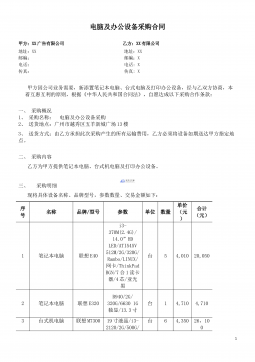
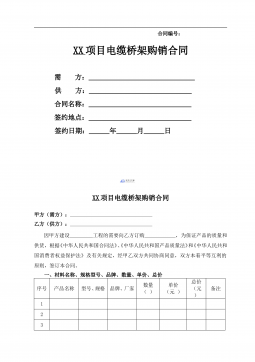
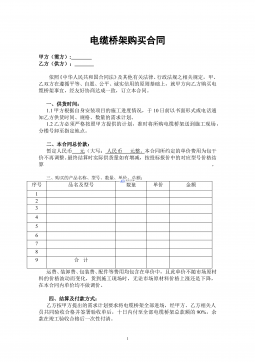

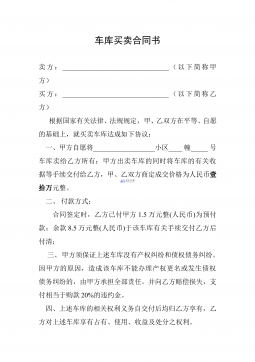
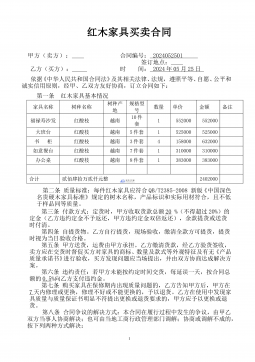




 渝公网安备50010702506394
渝公网安备50010702506394
